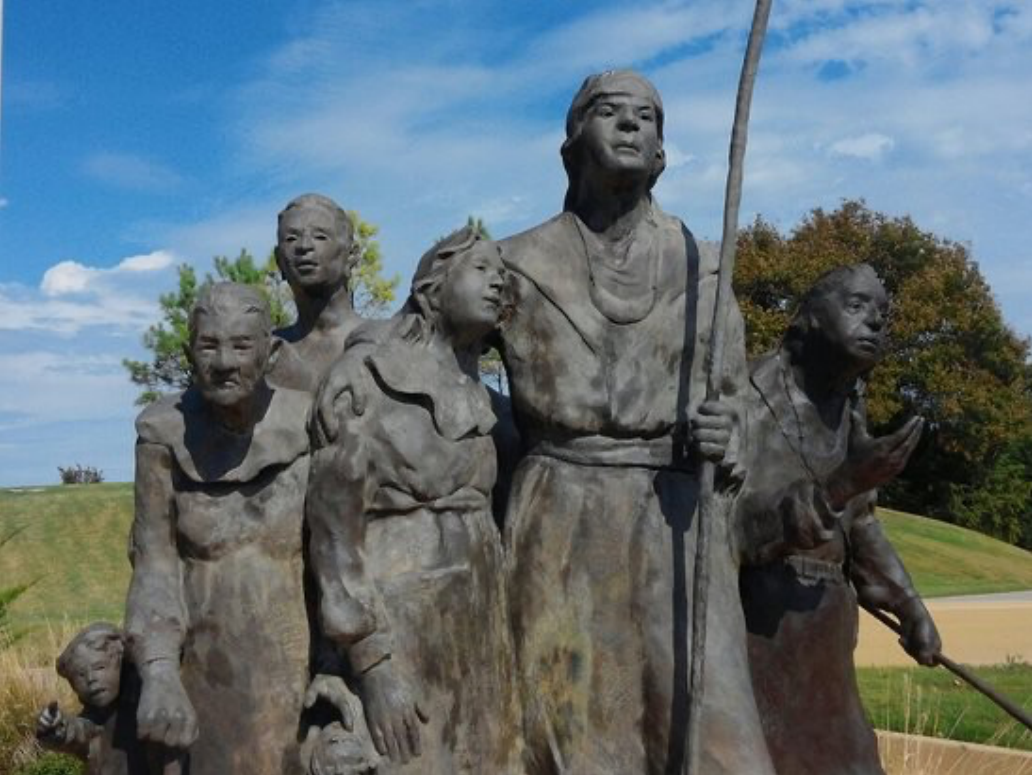The Dawes Rolls
The Dawes Rolls of the Five Civilized Tribes in Oklahoma, 1898-1914
The Dawes Rolls was taken during the years 1898-1914. In order to be listed on the Dawes Rolls, your ancestors must have lived in Indian Territory (present-day Oklahoma) as members or citizens of the Five Civilized Tribes (Chickasaw, Cherokee, Choctaw, Muscogee (Creek), and Seminole).
The Dawes Rolls are the required records for enrollment in the Five Civilized Tribes in Oklahoma today. You must have a direct lineal ancestor by blood listed on the Dawes Rolls. State-issued birth or death records are required as proof of lineage back to an original enrollee. All tribes have different requirements for citizenship, membership, or enrollment.
The Dawes Rolls only collected information on First Americans living in Indian Territory/Oklahoma. Ancestors found on the 1900 U.S. Federal Census living in other states will most likely not be found on the Dawes Rolls. The federal census is not the same as the Dawes Rolls. Many settlers living in Indian Territory before statehood (1907) were in search of land, so most people counted in the Federal Census as living within tribal nation boundaries in Indian Territory in 1900 were not connected to the tribes on the Dawes Rolls.
What are the Dawes Rolls?
The Dawes Rolls of the Five Civilized Tribes are a list of First Americans by blood, and other people living with these tribes in Indian Territory during 1898-1914. They were created to divide the land the tribes held in common, to give it to individual tribally enrolled citizens so they would have the right to sell the land after 25 years, if desired. Every person on the Dawes Rolls has a roll number, but this does not necessarily indicate degree of blood.
The Dawes Rolls were created by the Dawes Commission. The enrollment period closed March 4, 1907, but court cases involving disputed enrollment continued until 1914 when the enrollment process was ultimately ended. People born after 1907 will not be listed on the Dawes Rolls.
The Five Civilized Tribes in Oklahoma were forcibly removed (commonly referred to as “Removal” or the “Trail of Tears”) to Indian Territory during the 1830s from areas in Mississippi, Alabama, Kentucky, Georgia, Tennessee, the Carolinas, and Florida. There are many reasons a person may not be found on the Dawes Rolls, including but not limited to: lack of documentation, refusal or failure to enroll with the Dawes Commission, and rejection from the rolls due to lack of proof of connection to a tribe.
Once you have located your ancestor on the Dawes Rolls, you can look up their census card and enrollment packet. This can be done at the Oklahoma Research Center or by using subscription based-websites such as Fold3 or Ancestry.com.
To request Dawes Rolls research, please provide the following information: full names of family members (including married and maiden names), birth dates, death dates and any other identifying information about your direct blood ancestor(s) who were alive between the years 1898-1914 and living in Indian Territory.
